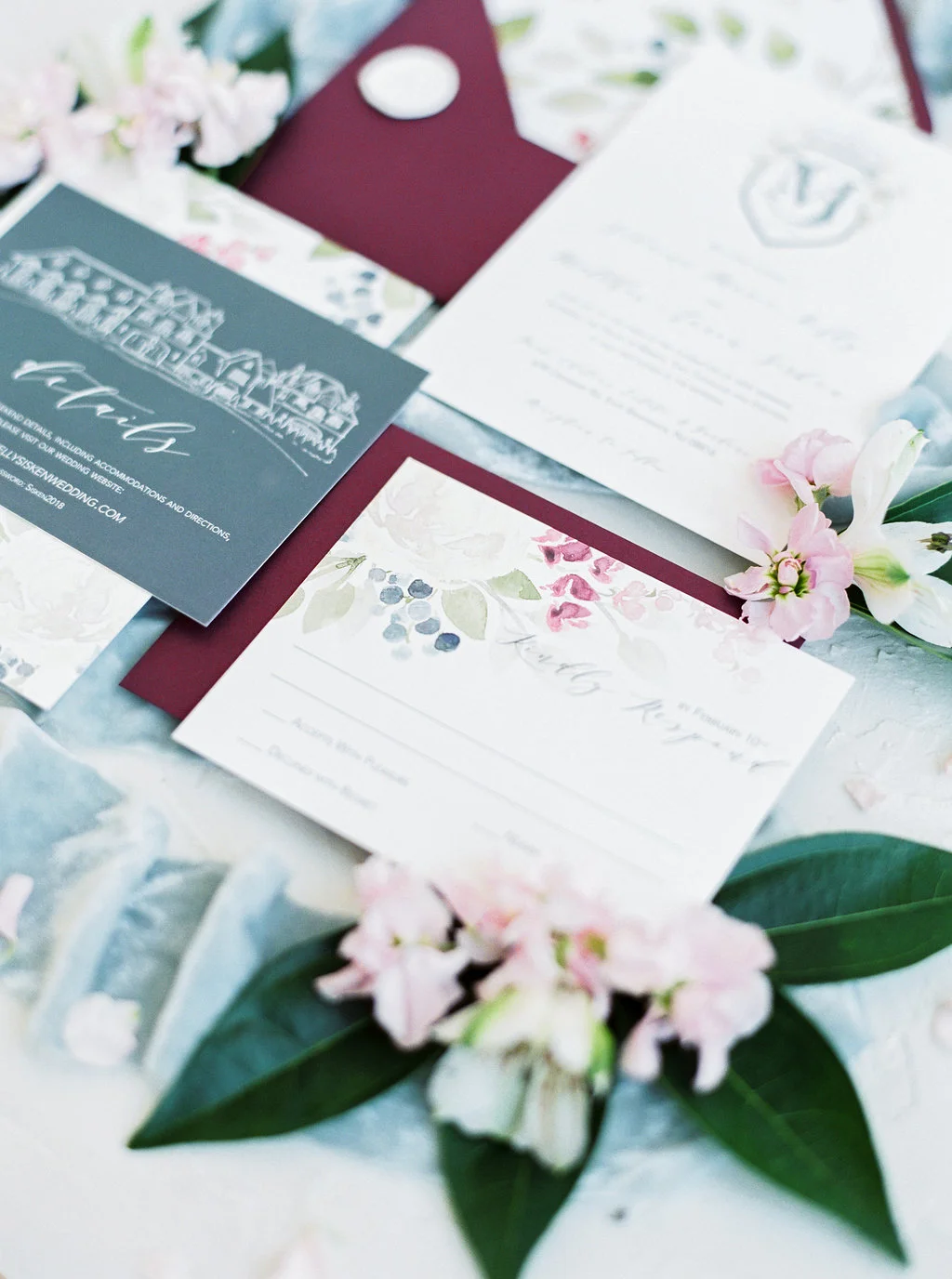Printing Methods For Wedding Invitations || The Bride's Guide to Wedding Stationery
Recently we chatted about different paper types and I listed the printing methods that I recommended for each one. I did not go into any detail regarding each printing technique, hopefully I can help shed some light on that now through the brief video above, or through the short list I have listed below it:
Pin one of these for later:
Flat Printing
Flat printing is the "standard" form of printing for Blushed, which I hesitate to say because I'm afraid that this makes it sound super boring and cheap, but it's not dull at all! It's the most cost effective, yes, but it is also the best way to showcase a wide variety of artwork. Everything from pencil or ink line drawings to watercolor florals or washes are done using the flat printing method—in fact, it is the only way to print watercolor (shown above).
The only paper type that does not work well with flat printing methods is handmade cotton rag paper... unfortunately. If you really want to cry or you secretly hate your stationer, ask them to flat print on cotton rag.
Or, take my advice and just say "no" to this headache and pursue one of the other options!
Letterpress
Letterpress is the current queen of the stationery trends. If you have browsing invitations on Pinterest, you have probably pinned a few letterpress designs.
Letterpress is a method of relief printing that uses a printing press. The designer uses a plate to create an impression on the paper in the desired color, using ink, foil or a blind press. Simply put: The designs or letters of an invitation is literally "pressed" into the paper. This creates a pillow-y effect around the design itself. As you might imagine, this method creates a beautiful, tactile experience that the viewer can both see and feel. My personal favorite is a single color press used for the text and a blind letterpress (meaning no ink, so it's just the delicate impression that you see) for the design itself—so delicate and ethereal!
Each color is applied with a different plate—each of which has a starting price tag between $300-500—which causes the price to rise quickly with each color that you use. If you're dying to use letterpress, but what to showcase a lot of artwork, you can also pair letterpress with flat printing for a beautiful effect.
Metallic Foil Printing
Foil printing! A huge trend in the past few years and I don't see it going anywhere for a while. I actually really like foil printing and wish more of my brides would take advantage of this beautiful effect. But, it is quite a bit more than flat printing, so if you don't love the look, don't do it!
There are two types of foil printing: Foil stamping and Toner transfer foil
Foil stamping is similar to letterpress, which means that you also have to pay for a plate—a large, hard surface with a raised design on it that is pressed against the paper. As we discussed above, the plate itself and the labor intensive nature of using the press will greatly increase your costs from the start.
Toner transfer foil is a method that you may have seen this method on Pinterest or in the craft section of a department store. Simply put, a laser printer is used to create a single color design in black. Then, the special foil is placed on top of the design and placed through a machine (similar to a laminator) that heats up the ink and foil, causing the who to adhere to each other. The rest of the foil is simply swept away.
This method is not as expensive, but it is labor intensive as each piece is done by hand and very few print shops offer this specific method.
I hope this little post has been helpful for you! Feel free to leave any questions that you have below and I will do my best to answer them for you!
Images in this post are by Katrina Crouch and Shanell Photography











